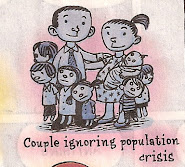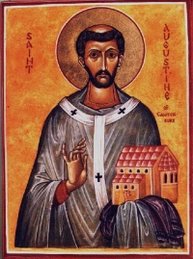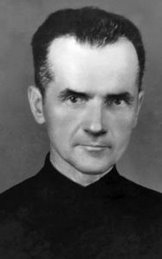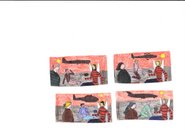Theodore's Memorial Video
Tuesday, November 29, 2011
Book review: Catholicism: A Journey to the Heart of the Faith
Catholicism: A Journey to the Heart of the Faith
Robert Barron
DISCLAIMER: THIS BOOK WAS RECEIVED AS PART OF THE LibraryThing.com EARLY REVIEWERS PROGRAM. I RECEIVED THIS BOOK FREE OF CHARGE, WITH THE ONLY STIPULATION THAT I PUBLISH A REVIEW OF THE BOOK.
This review will satisfy my part of the agreement.
In his book, Catholicism: A Journey to the Heart of the Faith, Fr. Robert Barron relates how Thomas Merton - before his conversion - responded when he discovered that the book he just bought had the words Imprimatur and Imprimi potest printed in the frontispiece. Briefly, these words indicate that the work had been examined by the Catholic Church and had received approval for publication by it. Only a Catholic book would have such a thing in it; in this case, the book was The Spirit of Medieval Philosophy, by Etienne Gilson.
He was tempted to throw the book out the window.
It appears that Thomas Merton and I have more than just our Faith in common; we also appreciate the significance of words like Imprimatur, or Imprimi potest at the start of a book. Therefore I was rather disappointed when I noticed that Fr. Barron’s book didn’t contain either one, or any other kind of approval from the Church other than the glowing reviews on the back of the dust jacket. Strike One against the book. This means that there may be some things in the book which may not pass the orthodoxy test, so I proceeded with caution as I read through the book.
I also am suspicious of writers who do not include their credentials prominently, especially if they are writing in their area of expertise. It shows a lack of professionalism, or perhaps they don’t want to be seen as having some authority on the subject. I can think of one reason a writer may want to do this, and it has to do with the audience they are writing to. Still, I don’t like it. I let my patients know I am a doctor when I am caring for them; likewise, a priest should not hide his profession while working to bring souls to Christ. Strike Two against the book.
It wasn’t long before something jumped out of the book that seemed a bit unorthodox. In his discussion of the Beatitudes, Fr. Barron quotes the Gospel of Matthew:
"Blessed are the clean of heart, for they will see God" (Mt 5:8)
Amen. And then Fr. Barron explained this passage with this sentence:
"This means that you will be happy if there is no ambiguity in your heart (the deepest center of the self) about what is most important."
This was truly a ‘What The Heck?’ moment for me when I read this sentence. There was no mention of the concept of purity, chastity, or having a soul free of sin. Instead, the words of Christ are interpreted to mean that being true to one’s goals or desires - whatever they may be - is what is most important. At least Fr. Barron had the intellectual honesty to avoid using the word ‘happy,’ or seeing God in his description; he must have known at the time that he was writing off the map. Just to make sure that I was not current with any new interpretation of the Scriptures, I ran this passage of the book by a couple of priests I know, and they both separately expressed surprise and horror about such a misrepresentation.
At this point I had to stop reading the book and try to figure out what Fr. Barron’s purpose was in writing this book. I continued reading, and started noticing that a sizeable number of authors quoted by Fr. Barron were not Catholic. Granted, he did quote Catholics throughout the book, but it seemed as if the number of Protestants cited was a bit excessive for a book on the Catholic Church. At this point I started to wonder if the audience for this book was not for Catholics; in other words, that this book was really intended to be part of the ‘New Evangelization’ George Weigel mentioned on the back of my book’s dust cover. Perhaps this is so, but it is disappointing that it contains erroneous teachings of the Church like the example mentioned above.
There were some good parts of this book. Fr. Barron writes very well about the saints. His short biographies on St. Katharine Drexel and St. Edith Stein were inspiring, as was her description of Blessed Teresa of Calcutta. For me, this one brought back memories of how I had met Mother Teresa twenty-five years ago in Washington, DC. In addition, the book is full of pictures of religious artwork which are related to the subject matter. Catholic art is the best kind in the world, and Fr. Barron truly showcases this aspect of our Faith.
But then he had to spoil it all by writing about Thomas Merton. I know a little bit about Thomas Merton; my first letter to the editor of a major newspaper was about him. I spent some time looking up more information online, and I even downloaded a lecture by Alice von Hildebrand called ‘The Tragedy of Thomas Merton.’ In that speech, she related how he did not follow the Benedictine Rule, how he essentially left the Trappist monastery, and how he died alone, far from the benefits of the Last Rites, after giving a speech which equated Communism with the Monastic way of life. After listening to von Hildebrand’s lecture, and reading other information about him, I would say that Fr. Barron picked a poor example for prayer and the contemplative life when he selected Thomas Merton.
In general, this book had a few good parts; namely, the lives of the saints and the pictures included in the text. Fr. Barron is a good story teller, and he writes well enough to touch even the heart of this skeptical reader. But these good aspects do not outweigh the fact that he probably could not get approval from the Diocesan Censor or the Bishop after writing such poor theology as the example mentioned above. Perhaps this book is really just intended to attract our Separated Brethren back to the Church. It is unfortunate that such a writer could not make this book as theologically sound as it is attractive.
Postscript: Here is a brief summary for the Latin terms I mentioned above. The link explains these terms in greater detail:
SUMMARY
Religious Superior's stamp: IMPRIMI POTEST "it can be printed"
Censor's stamp: NIHIL OBSTAT "nothing stands in the way"
Bishop's stamp: IMPRIMATUR "let it be printed"
from here: http://www.fisheaters.com/imprimatur.html
Subscribe to:
Post Comments (Atom)
Our Lady of the Mysterious Decapitation

Now restored with the help of some cement!
Prayer to Our Lady of the Mysterious Decapitation
Mary my mother, take my hand today, and all days.
Lead me away from all occasions of sin.
Guide me in fulfilling your last words in the Gospel,
"Do whatever He tells you."
Amen.
Lead me away from all occasions of sin.
Guide me in fulfilling your last words in the Gospel,
"Do whatever He tells you."
Amen.


















3 comments:
This is a book for devout followers of Christ as well as those who question their faith. It inspires, not through mere sentimental imagery and moral content, but through reason and rationale.
I read Father Luigi Guissani. I find Father Barron's message a parallel to his message. It helps to explain how the Church functions as the way for man to become fully human and find his meaning for life.
I disagree, @Netherland. I thought the book was long on sentimental imagery - both in words and pictures - but horribly remiss when it comes to orthodoxy. The example I cited is totally misleading; it is indefensible. The declarations made at the front of the book, such as Imprimatur or Nihil obstat, are there to indicate that the book has been reviewed to assure that the Faith has been presented without error. I don't think Fr. Barron could get such approval for this book. Goodness, I didn't even comment on his whacked out chapter on the Eucharist.... I assume you are talking about Fr. Giussani of Communion and Liberation. I do not know much about this priest or his organization, but your comparing Fr. Barron with him makes me less inclined to respect him or his organization.
I hope that when you say "the Church functions as the way for man to become fully human and find his meaning for life." that you understand that the greatest way the Church can do that is to help guide the Faithful to Heaven.
Post a Comment